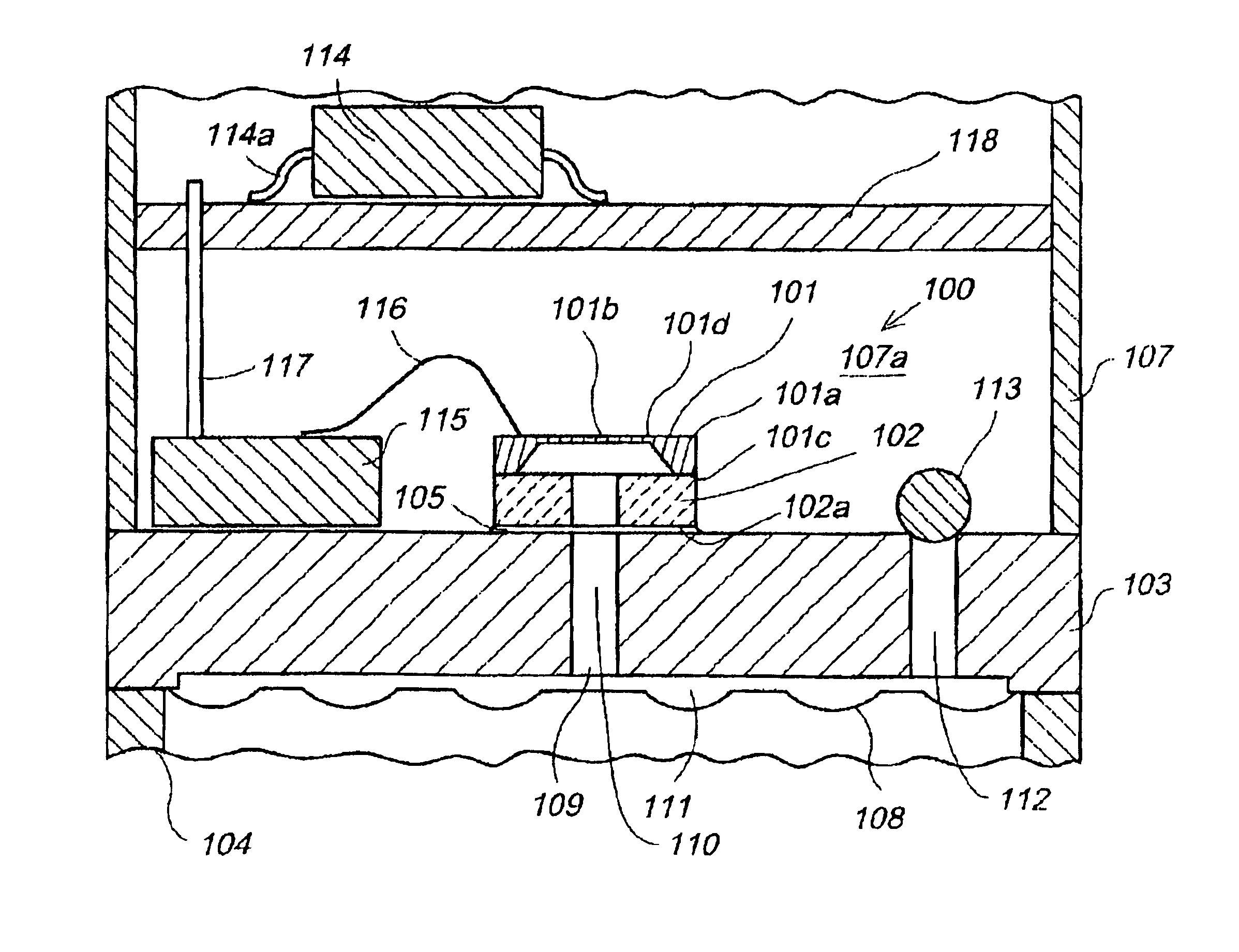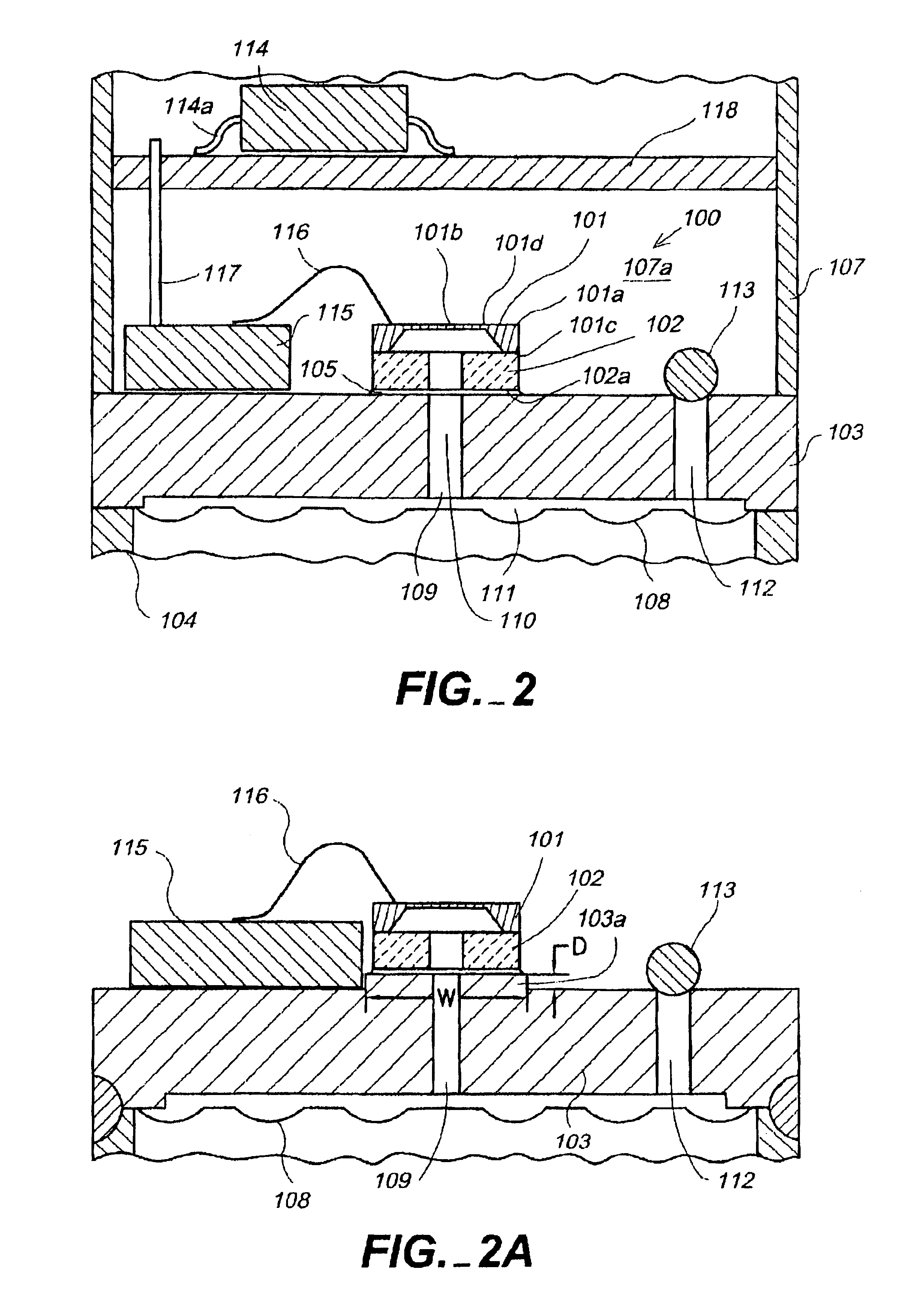Isolation technique for pressure sensing structure
a technology of pressure sensing structure and isolation technique, which is applied in the direction of fluid pressure measurement, fluid pressure measurement by electric/magnetic elements, instruments, etc., can solve the problems of conductive and corrosive fluids (gases and liquids) damaging the sensor and electronic structure, and the sensor can be easily damaged, so as to improve the reliability and cost of the sensor package, the effect of reducing the volume of oil in the oil-filled cavity and enduring high vacuum
- Summary
- Abstract
- Description
- Claims
- Application Information
AI Technical Summary
Benefits of technology
Problems solved by technology
Method used
Image
Examples
Embodiment Construction
[0032]While the invention is described below with reference to certain illustrated embodiments, it is understood that these embodiments are presented by way of example and not by way of limitation.
[0033]FIG. 2 illustrates in cross section a pressure sensor assembly 100 comprising a micro-machined silicon pressure sensor die 101 comprising a frame portion 101a surrounding a thinned diaphragm portion 101b. (Diaphragm portion 101b is typically formed by thinning a portion of a silicon wafer using either a liquid or dry etching process.) Piezoresistive resistors are formed in the top surface of die 101 in diaphragm portion 101b, e.g. by ion implantation or diffusion. These resistors are formed in locations on diaphragm 101b where the strain is greatest when diaphragm 101b is exposed to fluid under pressure.
[0034]Die 101 is anodically bonded to a support structure 102. Support structure 102 is sometimes referred to as a “constraint,” and is typically silicon or glass. In one embodiment, ...
PUM
 Login to View More
Login to View More Abstract
Description
Claims
Application Information
 Login to View More
Login to View More - R&D
- Intellectual Property
- Life Sciences
- Materials
- Tech Scout
- Unparalleled Data Quality
- Higher Quality Content
- 60% Fewer Hallucinations
Browse by: Latest US Patents, China's latest patents, Technical Efficacy Thesaurus, Application Domain, Technology Topic, Popular Technical Reports.
© 2025 PatSnap. All rights reserved.Legal|Privacy policy|Modern Slavery Act Transparency Statement|Sitemap|About US| Contact US: help@patsnap.com



